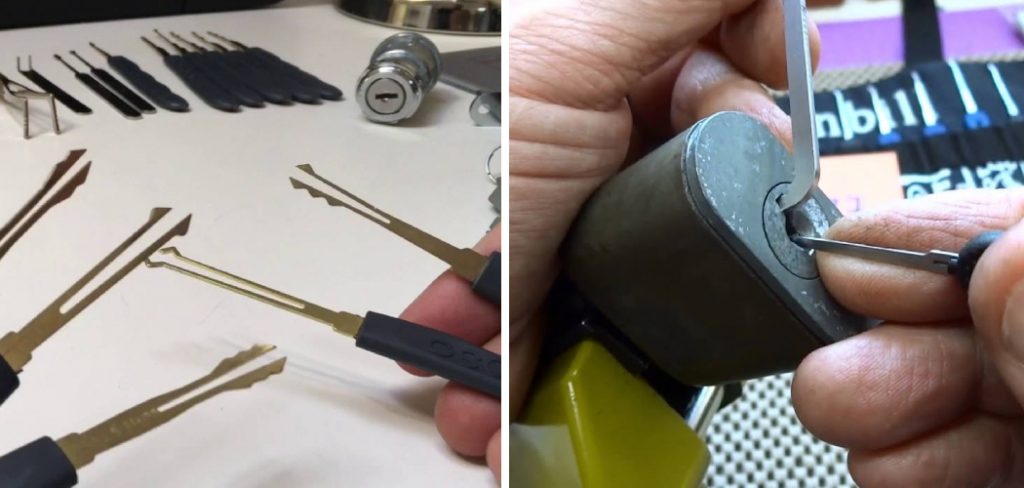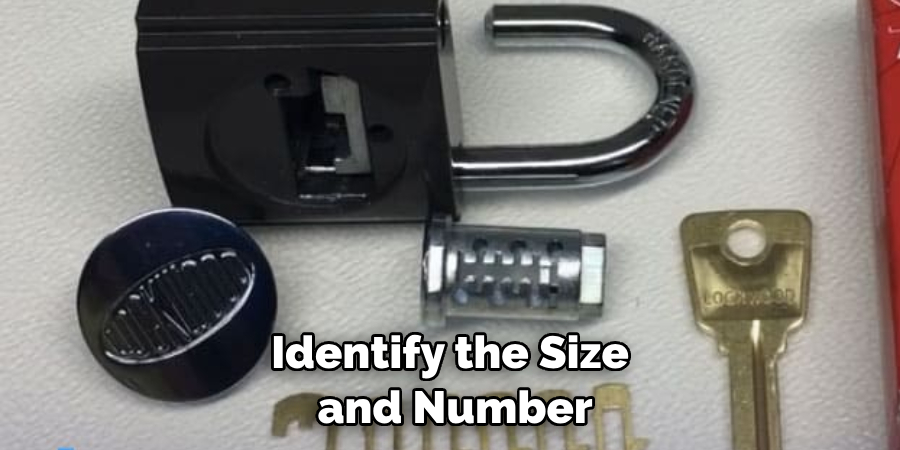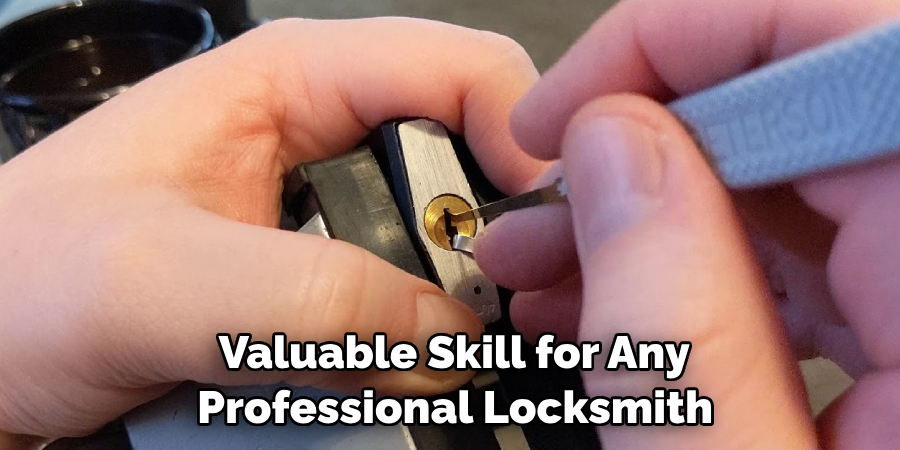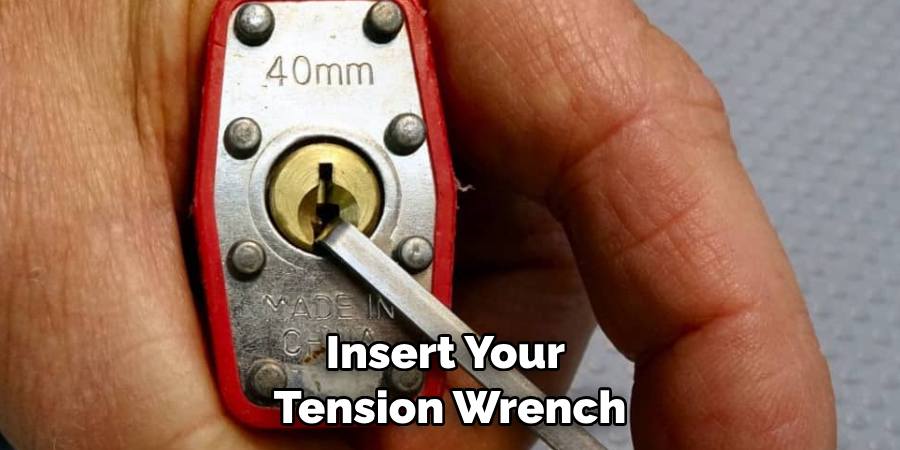Choosing the right wafer lock is a critical decision, whether you’re a locksmith, security professional, or simply looking to secure your own belongings. Wafer locks are commonly found in various applications, from padlocks to cabinets, and understanding how to pick the perfect one is essential for effective security and peace of mind.
With a multitude of options available in the market, from different sizes to varying levels of complexity, it’s important to have a clear strategy when selecting the ideal wafer lock to suit your needs.

In this comprehensive guide, we will delve into the key factors of how to pick wafer lock, exploring aspects such as security levels, ease of use, durability, and compatibility with specific applications.
Whether you’re a novice looking for a straightforward solution or a professional seeking the best lock for a specific task, our insights and tips will help you navigate the world of wafer locks with confidence, ensuring you make a well-informed decision for your security needs.
What is a Pick Wafer Lock?
Pick Wafer Lock is an innovative security solution that provides added protection for your home or business. It works by having a series of small wafers inserted into the lock, which are then locked using a special tool. This ensures that only people with access to the tool can open the door.

In order to pick a Wafer Lock, you must first identify the size and number of wafers in the lock. This can be done by either measuring the distance between each wafer or by counting them with a special tool. Once you have identified the number and size of wafers, you can insert a pick into each one, pushing down on them slightly before turning it to unlock the door.
It is important to remember that picking a Wafer Lock can be difficult and requires practice in order to get it right. It is also important to use the correct tools for the job, as using anything other than the proper tools may damage the lock or even render it unusable. If you are unsure about how to pick a Wafer Lock, then you should contact a professional locksmith for assistance.
Aside from picking the lock, you can also purchase Wafer Lock rekeying kits to reset the lock so that it only works with a new key. This is useful if you want to change who has access to your property without having to replace the entire lock. Rekeying kits are available from most hardware stores and locksmiths and typically come with instructions.
The Importance of This Skill for Locksmiths

Knowing how to pick wafer locks is a valuable skill for any professional locksmith. It is especially important for those who work with automotive or commercial door locks, since these use more complex and intricate locking systems than residential doors. With the right tools and know-how, picking a wafer lock can be done quickly and efficiently.
Aside from being an important tool for locksmiths, knowing how to pick a wafer lock can also be useful in everyday life. When it comes to dealing with forgotten or lost keys, having the knowledge and skills to open any type of lock without breaking it is invaluable. This is especially true if you are ever stuck outside your car or home due to misplacing your key.
It is important to note that picking a wafer lock should never be attempted without proper training. This skill requires special tools and techniques, so attempting it without the right knowledge can result in damage to the lock or potential personal injury. Therefore, learning how to pick a wafer lock should only done by those with specialized knowledge and experience.
The Legal and Ethical Considerations Related to Lock Picking
When it comes to picking a wafer lock, there are some ethical and legal considerations that should be taken into account. It’s important to remember that the practice of lock picking is often seen as an act of burglary or trespassing, which can lead to legal repercussions if not done in accordance with the law.
In many jurisdictions, it is illegal for individuals to pick a lock that doesn’t belong to them without permission from the owner. It is also illegal to modify, reproduce, or otherwise tamper with locks that do not belong to you without express permission from the owner or legal authority. Additionally, it is important to be aware of any local laws regarding lock picking as some states have made it illegal even when done for legitimate reasons.
Furthermore, it is important to always practice lock picking in a safe and responsible manner. This means following all safety protocols and being aware of the risks associated with tampering with locks. In addition, the use of any tools or devices used for lock picking should be done with respect for the property owner’s rights, as well as their right to privacy.
Finally, it is important to practice proper etiquette when lock picking. This includes being respectful of the owner and their property, avoiding any unnecessary damage or tampering with the lock, and notifying them after you have picked the wafer lock if they requested that you do so.
10 Steps How to Pick Wafer Lock
1. Understand the Different Types of Wafer Locks

Before you can begin to pick a wafer lock, it is important that you understand the different types of wafer locks available. There are two main types of wafer locks: single-sided and double-sided. Single-sided wafer locks have one side with flat wafers while double-sided wafer locks have two sides with flat wafers. It is important to determine which type of lock you are dealing with before attempting to pick it.
2. Gather the Necessary Tools
In order to successfully pick a wafer lock, you will need several tools including a tension wrench, a rake tool, and a pick tool. The tension wrench is used to apply torque on the lock plug while the rake tool is used to manipulate the pins inside the plug. Finally, the pick tool is used to find and lift each individual pin in order to open the lock.
3. Insert Tension Wrench into Lock Plug

Once you have gathered all of your tools, insert your tension wrench into the bottom of the lock plug and apply light pressure in either direction (clockwise or counterclockwise). This will help you determine which way will provide more resistance when manipulating the pins inside the plug.
4. Insert Pick Tool into Lock Plug
Once you have determined which direction provides more resistance, insert your pick tool into the top of the lock plug and begin manipulating each individual pin until they are all lifted at once. As you manipulate each pin, make sure that you are applying light pressure on your tension wrench so that it does not become too tight or too loose as this could cause difficulty when picking your lock.
5. Manipulate Pins with Rake Tool
Once all of your pins have been lifted, use your rake tool to gently move them back and forth until they reach their correct position within the plug chamber. Again, make sure that you are applying light pressure on your tension wrench as this will help keep everything in place while manipulating each pin individually.
6. Turn Tension Wrench
Once all of your pins are in their correct position within the plug chamber, turn your tension wrench slightly clockwise or counterclockwise depending on which direction provides more resistance when inserting it into the bottom of your plug chamber initially (this step may take some practice). If done correctly, this should unlock your wafer lock!
7. Remove Plug from Lock Body

After unlocking your wafer lock, carefully remove its plug from its body by pulling it out gently using both hands (make sure not to pull too hard as this could damage both components). Once removed from its body, set aside for later use or discarded if necessary depending on what type of security system was installed originally (some systems require new plugs after being picked).
8. Reassemble Lock Body & Plug
Now that you have successfully picked and unlocked a wafer lock, reassemble its body and plug by first inserting its body into its original housing and then inserting its newly picked plug back into place within its body (make sure not to force it as this could damage both components). Once reassembled correctly, test out by turning the key in the keyhole again – if done correctly then congratulations! You’ve successfully picked a wafer lock!
9. Clean Up Your Tools & Surroundings
Now that you’ve successfully picked a wafer lock it’s important to clean up any messes made during the process such as oil spills or debris on the floor/work surface area – these can be hazardous if left unattended for extended periods of time so make sure everything is properly cleaned up before continuing onto next project/task!
10. Take Notes & Monitor Your Progress
Last but not least – take notes throughout the entire process so that if something goes wrong along the way then at least there’s some record-keeping for future reference! Also, monitor progress closely ensuring everything going according to plan – this way mistakes can be corrected quickly without having to start over from the beginning again!
Things to Consider When Picking a Wafer Lock
When picking a wafer lock, there are several things to consider. First, ask yourself what you need the lock for. Different locks serve different purposes and have different levels of security. For example, if you want to secure a filing cabinet or a gun safe, choose a high-security combination lock that uses more than one code. Similarly, if your needs are more basic, a simpler lock with fewer code combinations will suffice.

Second, remember that some locks are better for certain types of doors or materials. For instance, if you’re looking to secure a wooden door, choose a wafer lock that can fit the shape of the door.
Third, consider the cost and availability of replacement parts. It’s important to purchase a lock that is not only secure but also easy to find replacement parts for in case something goes wrong.
Common Mistakes to Avoid When Picking a Wafer Lock
Picking a wafer lock is no easier than picking other types of locks, and can be just as tricky. However, there are certain mistakes that should be avoided when attempting to pick one.
First, make sure you have the right tools for the job. Wafer locks require special tension tools in order to achieve the necessary torque to manipulate the pins. Using the wrong tools can make the job much harder and can even damage the lock.
It’s also important to be patient and work slowly when picking a wafer lock. Rushing through the process will not only increase your chances of making a mistake, but it may also damage or break the lock, rendering it useless. Take your time to ensure each pin is moved in the correct order and that you don’t cause any damage to the lock.
Finally, be sure to double check your work after you’ve picked the lock. Make sure all pins are aligned correctly and that the plug can turn smoothly without any resistance. If there is a problem, take a step back and reevaluate what might have gone wrong before continuing.
Conclusion
Now that you know how to pick a wafer lock, the possibilities are endless! Whether you’re a locksmith, security professional, or someone who just wants to be able to open their own home lock — the skill of wafer picking can come in handy. There might even be a situation where wafer lock picking could save your life someday. Keep your skills sharp by practicing whenever possible and increasing your expertise when needed.
The knowledge you gain now will pay off in improved safety and security down the road! And remember — if you ever find yourself in need of assistance with how to pick wafer locks, there is a wide range of services available to help you with this process. So don’t hesitate—go out and start mastering your new skill today!
About
Safety Fic is a distinguished figure in the world of Diy design, with a decade of expertise creating innovative and sustainable Diy solutions. His professional focus lies in merging traditional craftsmanship with modern manufacturing techniques, fostering designs that are both practical and environmentally conscious. As the author of diy, Safety Fic delves into the art and science of Safety Fic-making, inspiring artisans and industry professionals alike.
Education RMIT University
(Melbourne, Australia) Associate Degree in Design (Safety Fic) Focus on sustainable design, industry-driven projects, and practical craftsmanship. Gained hands-on experience with traditional and digital manufacturing tools, such as CAD and CNC software.
Nottingham Trent University
(United Kingdom) Bachelor’s in diyfastly.com and Product Design (Honors) Specialized in product design with a focus on blending creativity with production techniques. Participated in industry projects, working with companies like John Lewis and Vitsoe to gain real-world insights.
Publications and Impact
In diy, Safety Fic his insights on indoor design processes, materials, and strategies for efficient production. His writing bridges the gap between artisan knowledge and modern industry needs, making it a must-read for both budding designers and seasoned professionals.
